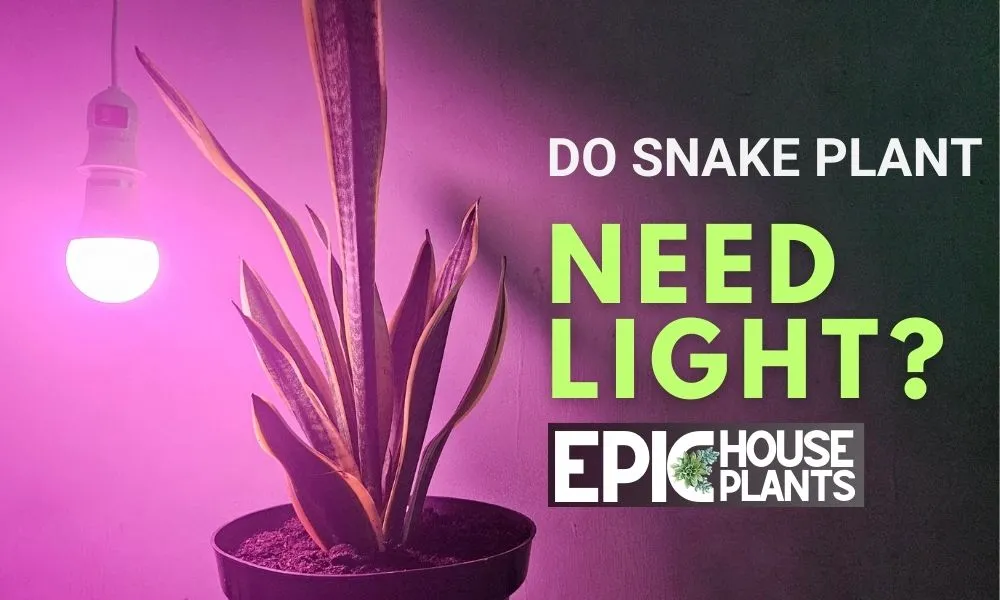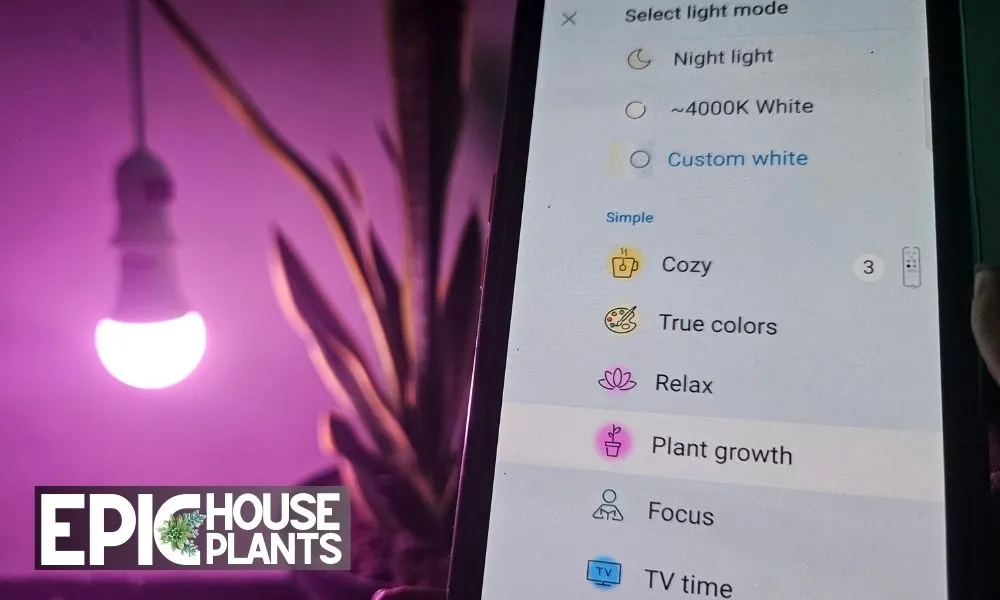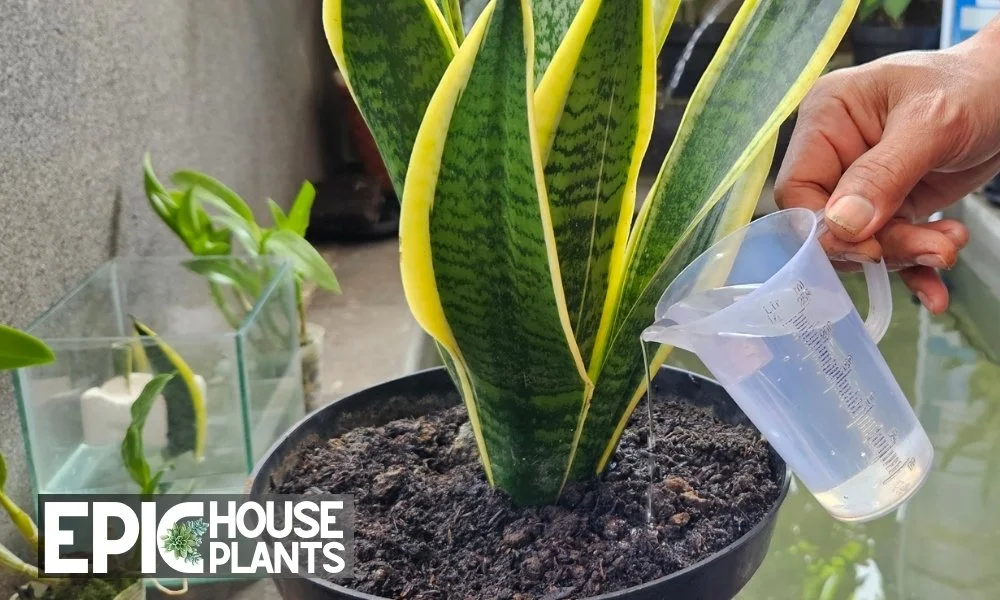If you are a proud plant parent or someone who’s just starting out in the green world, you must have heard of the hardy and visually appealing Snake Plants.
However, one question that may frequently come up is: Do Snake Plants need light? The answer is a resounding ‘yes.‘
Just like other green plants, Snake Plants also require light for photosynthesis, the process they use to create food. Versatile as they are, Snake Plants can thrive under any light level, from low to high.

Importance of Light for Snake Plants
Let’s delve into understanding the importance of light for a snake plant.
The Role of Light in Photosynthesis
Plants, including the snake plant, need sunlight to perform photosynthesis. This process is how plants manufacture their food, using sunlight to convert water and carbon dioxide into glucose. Glucose is the energy that fuels growth and all necessary metabolic functions within the plant.
Effects of Insufficient Light
Without sufficient light, snake plants will gradually weaken due to a lack of energy produced through photosynthesis.
In the short term, snake plants may survive in low light conditions, but over time, inadequate light can lead to a variety of problems including stunted growth, fewer leaves, loss of variegation, and increased susceptibility to pests and diseases.
Limitations of Direct Sunlight
Though resilient, snake plants are not invincible against the elements. Despite needing light, they can only tolerate direct sun for a couple of hours. Continuous exposure to harsh, direct sunlight can lead to sunburn, resulting in damaged, discolored leaves.
If you’re interested in learning more about how Snake Plants interact with their environment, our blog post on whether Snake Plants Can Live Outside is a must-read.
Lighting Requirements for Snake Plants
Moving on to our next sub-topic, we’ll discuss the specific lighting requirements for snake plants.
Type and Intensity of Light
Ideally, snake plants prefer bright, indirect sunlight. While they can adapt to low light conditions, they thrive best under bright, indirect light.
When considering light intensity, snake plants do well within 1000-2000 foot-candles. Foot-candles is a measurement of light intensity, defined as the amount of light falling on a surface.
Duration of Light Exposure
The ideal duration of light exposure for snake plants is approximately 8-10 hours of bright light per day. This light duration can fluctuate depending on the season. They can handle less light during the winter months.
Using Artificial Grow Lights
Interestingly, snake plants can also grow under artificial grow lights that can mimic natural sunlight. This is a great option for spaces without enough natural light or during the darker months of the year.
Growing Snake Plants with Artificial Light

Let’s delves into the world of artificial lighting for snake plants. Artificial light isn’t just for office buildings and retail stores; it can also be a plant’s best friend, especially when there isn’t enough natural light.
| Type of Light | Description |
|---|---|
| Fluorescent Lights | Fluorescent lights are a popular choice for indoor gardening because they provide the right spectrum of light for plant growth. They are efficient and economical, with Compact Fluorescent Lights (CFLs) being particularly suitable for smaller indoor gardens. |
| Incandescent Light | Incandescent lights can also be used but emit more heat compared to other light sources. Hence, it’s important to ensure the plant is not too close to the light source to prevent heat damage. |
| LED Lights | LED lights are an energy-efficient choice for growing snake plants indoors. They can mimic the full spectrum of sunlight, catering to the plant’s photosynthesis needs without overheating or causing leaf scorch. Some LED grow lights are even designed specifically for plants, with adjustable color spectrum and intensity features. |
| Halogen Lights | Halogen lights, though not as commonly used, can provide suitable conditions for snake plants. They emit a bright, white light that closely resembles natural sunlight. However, they produce more heat than LEDs and fluorescents, requiring caution and safe distance placement to avoid heat damage to plants. |
Signs of Insufficient Sunlight in Snake Plants
Snake plants’ health can be adversely affected if they don’t receive adequate sunlight. Understanding these signs will help you rectify the situation promptly and ensure your plant’s survival.
If you’re interested in learning more, our blog post titled “How Fast Do Snake Plants Grow” offers more insight into the growth pattern of these fascinating plants.
Stunted or Very Slow Growth
One of the most evident signs that your snake plant is not receiving enough light is stunted or very slow growth. Inadequate sunlight means the plant cannot photosynthesize enough, resulting in slowed growth and developmental processes.
Sparse and Weak New Leaves
Insufficient light could lead to fewer new leaves. The new leaves that do appear might be small, weak, thin, and sparse due to a lack of energy for their development.
Wilting and Droopy Leaves
Without enough light, snake plants might begin to exhibit wilting, droopy leaves. This is an indication that the plant is unable to generate the energy it needs for its metabolic processes.
Lanky Stems Leaning Toward Light Sources
A classic symptom of inadequate light in plants is lanky stems leaning toward light sources. This is the plant’s effort to get as much light exposure as possible.
Yellow or Brown Leaves
The leaves of snake plants will start turning yellow or brown due to a lack of chlorophyll, a green pigment crucial for photosynthesis that is produced when plants get enough light.
Premature Leaf Drop
In extreme cases, snake plants may experience premature leaf drop due to the stress of insufficient light. This is a last-ditch effort to conserve energy.
Signs Your Snake Plant is Receiving Too Much Sunlight
Conversely, snake plants can also suffer from too much sunlight exposure. Let’s identify the signs of excessive light, ensuring your snake plant thrives.
Leaves Turning Strange Colors
If your snake plant leaves are turning yellow or brown, this could be a sign of too much direct sunlight. The excess light can cause the plant’s pigments to degrade, leading to a change in leaf color.
Crispy or Brown Edges on Leaves
Too much sunlight can cause the edges of the leaves to become crispy or brown, a clear sign of sunburn.
Brown Spots on Leaves
Sunburnt leaves often develop brown spots as a result of damage caused by intense light and heat.
Leaves Curling Downward
Curling or drooping of leaves is a reaction of the plant to protect its surface area from the intense sunlight and reduce evapotranspiration.
Thick and/or Yellow New Growth
If the new growth on your snake plant is unusually thick and/or yellow, this could indicate that the plant is receiving too much sunlight.
FAQs
Can Snake Plant survive without sunlight?
Snake Plants are hardy and can tolerate low light conditions, but they cannot survive without light altogether. They need light for photosynthesis, which is vital for their survival.
How long can Snake Plant live without light?
A Snake Plant can survive without light for about 2-3 weeks, but its health will start to decline after this period due to a lack of photosynthesis.
Final Words
In conclusion, while snake plants are flexible and adaptable to varying light conditions, they have specific light requirements. Too little or too much sunlight can result in numerous problems that will manifest in their physical appearance.
Understanding these signs is key to providing the best care for your snake plant, ensuring its health and longevity.
Author

Pudji Haryanto
Pudji Haryanto is a writer and urban farmer with a passion for cultivating plants. He has over 15 years of experience in agriculture and currently manages a 65,000 square foot rice-field and yard filled with various plants, including vegetables, spices, flowers, and garden plants.

